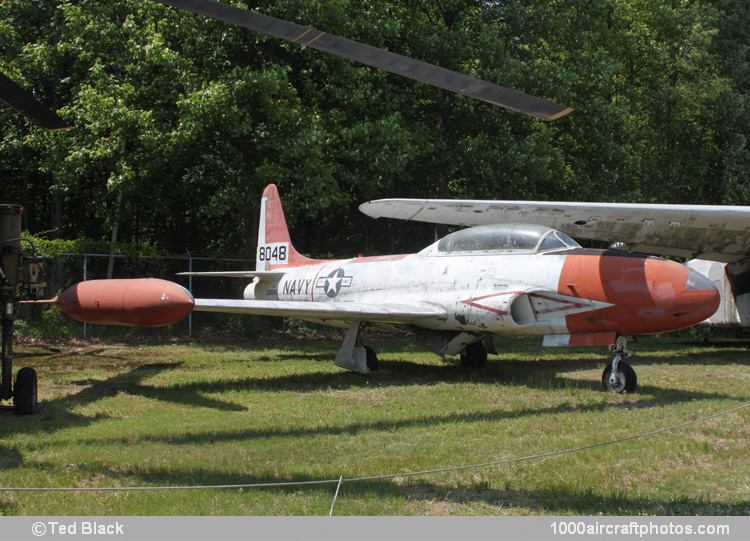03/15/2017. Remarks by Johan Visschedijk: "The first USN operation of Shooting Stars, Lockheed's famous jet fighter, came when three P-80As and one P-80B were obtained from the USAF; one, with an arrester hook, was used for deck-landing trials aboard the USS Franklin D. Roosevelt. Although these P-80s carried USN BuNos. (29667, 29668, 29689, 29690) they had no USN designation. During 1948 the USN acquired a further batch of fifty single-seat F-80Cs from the USAF for use as jet advanced trainers. Designated TO-1 initially and TV-1 after the USN changed Lockheed's symbol from O to V, they had no arrester gear. Despite their training role, sixteen of the TO-1s were used to equip a front-line USMC fighter squadron, VMF-311, late in 1948.
During 1949 the USN began procurement of the two-seat trainer developed for the USAF as TF-80C and produced as the T-33A. An initial order for 26 of these aircraft took the USN designation TO-2; this subsequently changed to TV-2 and procurement continued for several years. Total USN and USMC procurement of the TV-2 series amounted to 699, for use as advanced and instrument trainers and for other miscellaneous duties. In 1951 a few TV-2s were modified for guidance and control duties in connection with missile and target trials, designated TV-2D, while in 1956 a few more to a new standard became TV-2KDs as drones or control aircraft. New designations assigned in 1962 to these aircraft were T-33B (TV-2), DT-33B (TV-2D) and DT-33C (TV-2KD).
The TV-2 series proved generally unsuitable for carrier operations, and to overcome this Lockheed developed a private venture prototype during 1952 as the L-245. First flown on December 15, 1953, the L-245 was ordered into production as the T2V-1 Seastar."
